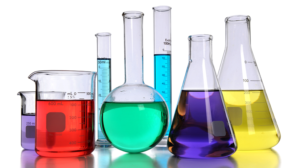 There are many different processes that you can use for extraction. Depending on the chemicals that are used as a solvent and there are different sets of environmental and safety considerations that you must keep in mind for each solvent
There are many different processes that you can use for extraction. Depending on the chemicals that are used as a solvent and there are different sets of environmental and safety considerations that you must keep in mind for each solvent
Using Phytosols in extraction offers many advantages over other process chemicals that are used today. Here are some of the advantages of using Phytosols when compared with the others.
Traditional Hexane/ Ethanol/ Butane/ Propane
Phytosols offer several advantages over the traditional methods of extraction using hexane, ethanol, butane or propane.
HFC-134a (the primary chemical used in phytonic extraction) is non-flammable and less likely to have an accidental explosion when compared to traditional flammable chemicals mentioned above.
Another advantage is reduced toxicity and potential environmental impacts. Hexane and petroleum ether are both toxic chemicals that must be carefully controlled and monitored to prevent release and environmental impacts. Using HFC-134a relaxes some of those restrictions.
Finally, the separation of HFC-134a from the desired substances is simpler, since the boiling point is –14.9°F at one atmosphere
Supercritical Carbon Dioxide
Supercritical Carbon Dioxide (sc-CO2) is another alternative chemical process used for extraction. It takes advantage of the properties of a supercritical state which means that it is at a temperature and pressure above its critical point, where distinct liquid and gas phases do not exist. It can effuse through solids like a gas, and dissolve materials like a liquid.
To achieve this state, you need to use high pressure. In comparison to HFC-134a, which will liquefy at 75 psig, sc-CO2 needs pressure more than 1500 psig. This means that to use this process effectively, you must have high-pressure rated equipment as well as pumps, compressors and condensers that can operate at these pressures.
Investment in this equipment can be quite high. There is also a significant amount of administrative overhead in the way of inspections, certifications and maintenance of high-pressure equipment. This makes the sc-CO2 process cost prohibitive for smaller, high-value extractions.
Due to the acidic nature of CO2 in the presence of moisture, sc-CO2 is also limited in what processes that it can be used for, particularly if low pH sensitivity is an issue.
Ionic Liquids
Another up-and-coming chemical family that is being considered for Phytonic extraction are ionic liquids. While this group of chemicals does show as much promise for extraction as Phytosols, it is relatively new. There is little research in the field.
This lack of understanding leads to some uncertainty with how ionic liquids may interact with extracted compounds. While a few have already been commercialized, there is still much research on the topic that needs to be completed.
HFC-134a, on the other hand, has been highly studied. The USA, Japan and Europe have extensive research on the compound, and our understanding of how it is going to react is well founded.
Consider an Advanced Phytonic Extractor for your Plant
Are you looking to upgrade your extraction process to a safe, efficient and cost saving one? COSTELLO can help install an Advanced Phytonic’s extractor in your plant. Check out Part 1 and part 2 of the series!
Phone: 310-792-5870 Email: rcca@rccostello.com
Website: rccostello.com